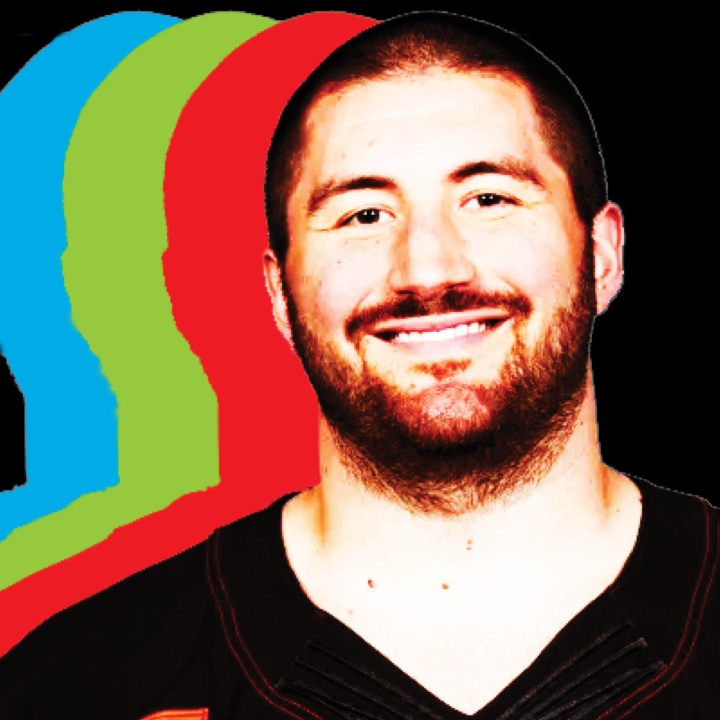
Why the NFL's Approach to Field Surfaces Is Uneven
4/19/23
For more than a decade, players have been speaking out about their strong preference to work on natural grass over synthetic playing surfaces. Players have shared stories about how their bodies feel after playing on turf compared to grass, and the injury data for nearly a decade supports those anecdotes.
However, in early November of last year, there was a large media offensive by the NFL to pushback against the historical data and players’ experiences. The following slide was distributed to the media, and NFL staff and owners were aggressive in their claims that the fight over which is safer, grass or turf, was no longer an issue.

At that time, on a conference call with media members, the NFL’s Jeff Miller stated that “the questions have changed,” referencing questions about which field surface is safer, grass or turf.
We as a union believe that knowledge is power, and I wanted to take the time to share additional injury data that can help give a broader view of the often-discussed issue.
Here’s what the injury data has looked like over the past decade, using a zoomed-out version of the graph that was shared with ESPN last year:

What this graph shows is that for six consecutive years, injury rates on synthetic surfaces were far higher than on natural surfaces.
Moreover, a study was conducted and published in The American Journal of Sports Medicine by the NFL’s leading data scientists and several NFL team physicians. This study confirmed the elevated injury rates on turf when compared to grass from 2012-2018. See below:


So, for nine years it was clear that grass fields were safer than turf. Then, in 2021, the rates became the closest they have ever been, but our union believed this was an anomaly. The NFL took the position that injury data from a single year would be definitive enough to publicly declare that our safety concerns about artificial surfaces was over.
Well, the latest injury data is now available and suspiciously, the NFL did not set up a media call about it. Why? Take a look for yourself:

In short, last year, the gap – much like the NFL’s credibility with players on this issue – was as wide as it has ever been, proving that (as the NFLPA suspected) 2021 was in fact an outlier. Now, 10 of the previous 11 years show the same exact thing -- grass is a significantly safer surface than turf.
I would like to know what Jerry Jones thinks of this new information, given that he too, in November of 2022 said, “And it's not because we have the surface that we have. Our league stats don't see issues with the type of surface that we have as opposed to natural grass. We don't see issues. No facts bear that out."
The credibility the league has with the players on health and safety issues is virtually nonexistent. Instead of following the long-term data (which is clear on this issue), listening to players and making the game safer, the NFL used an outlier year to engage in a PR campaign to convince everyone that the problem doesn’t actually exist. For example, the Tennessee Titans recently announced that they will be changing from a grass field to turf, citing that they believe the change will make the field safer.
We currently have a single test for all field surfaces called the “Clegg” test, which simply measures a field’s hardness. While we are working diligently and collaboratively with the NFL’s engineering experts to devise more advanced ways to measure field performance and safety, this test is all that we currently have. However, even this simple measure was too much for the NFL to adhere to when push came to shove in Carolina.
Last year on Christmas Eve, Carolina’s field failed the Clegg test. For a surface to pass this test, it must measure below 100g (units of gravities), and the meter for this test goes up to a maximum of 150g. When the field in Carolina was tested during the pregame check, it came back as -- you guessed it -- 150g.
Players reached out and told us the field was way too hard, describing it as concrete. Players reported that they couldn’t even wear cleats because they wouldn’t sink into the turf. When we reached out to the league, they told us they were aware of these concerns and were working to remedy them.
However, instead of delaying the game or finding another way to fix the issue, the league gave the green light to kick off the game as scheduled. Afterward, the league told us that late in the first half, the field finally did fall below the 100g max. But the fact remains that the players in that game had to play on a field that the league acknowledges was not safe. That is beyond frustrating to players and unacceptable in the eyes of our union.
The NFL and team owners have the resources to fix these safety issues with fields, and it is inexplicable why there is such a failure to protect players on an issue that EVERYONE knows is a problem.
It makes absolutely no sense for European soccer clubs to visit the U.S. every year – including this upcoming summer – and play exhibition games at NFL stadiums on high-quality natural grass while NFL players are subjected to greater risk on artificial surfaces. And it is absolutely appalling that owners are more willing to provide safe fields for soccer players than for the football players who are the primary workers on those fields -- and who, in many cases, helped pay for the stadiums where those fields lay.
As much as the NFL wants to ignore the grass field issue, the data and their actions will continue to demonstrate their callous hypocrisy.